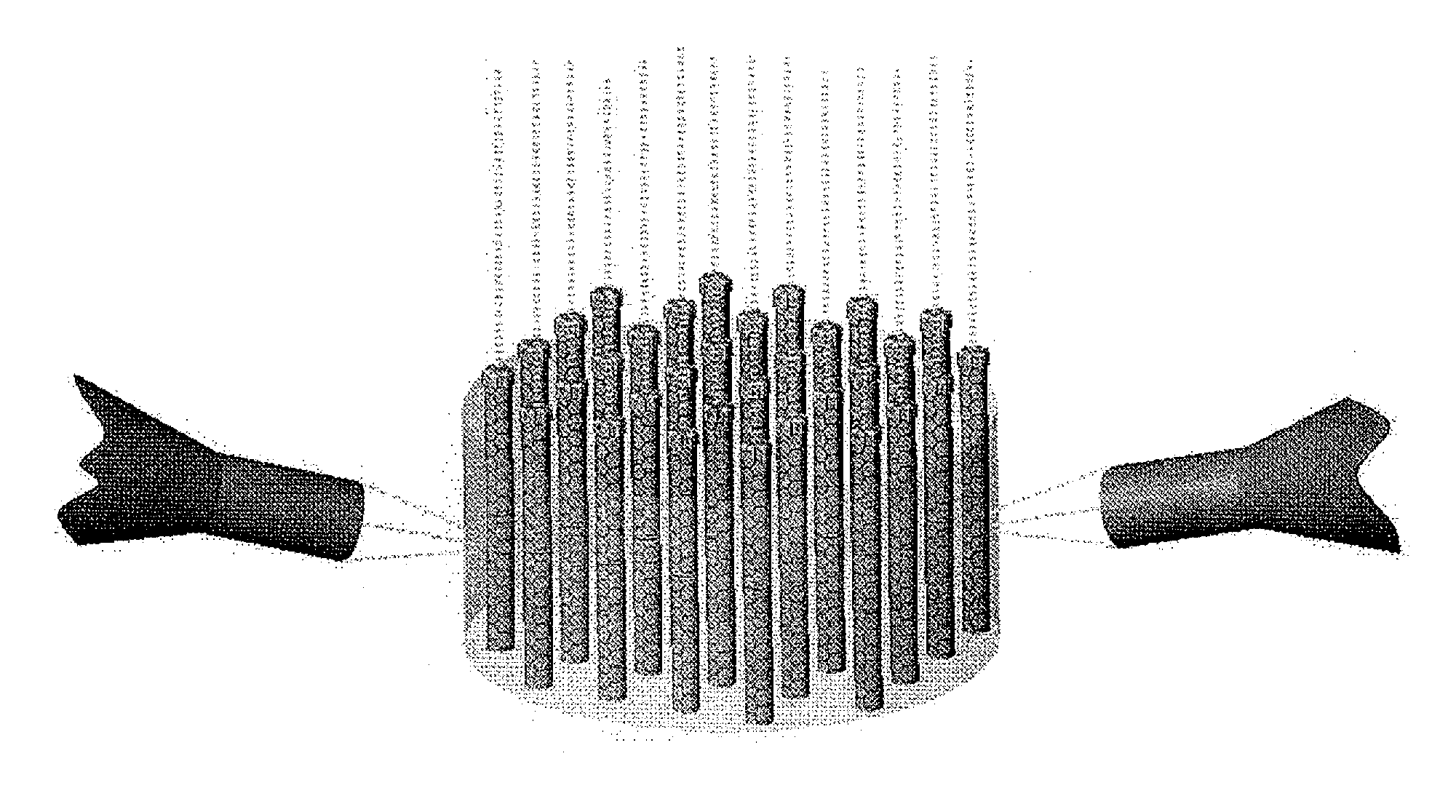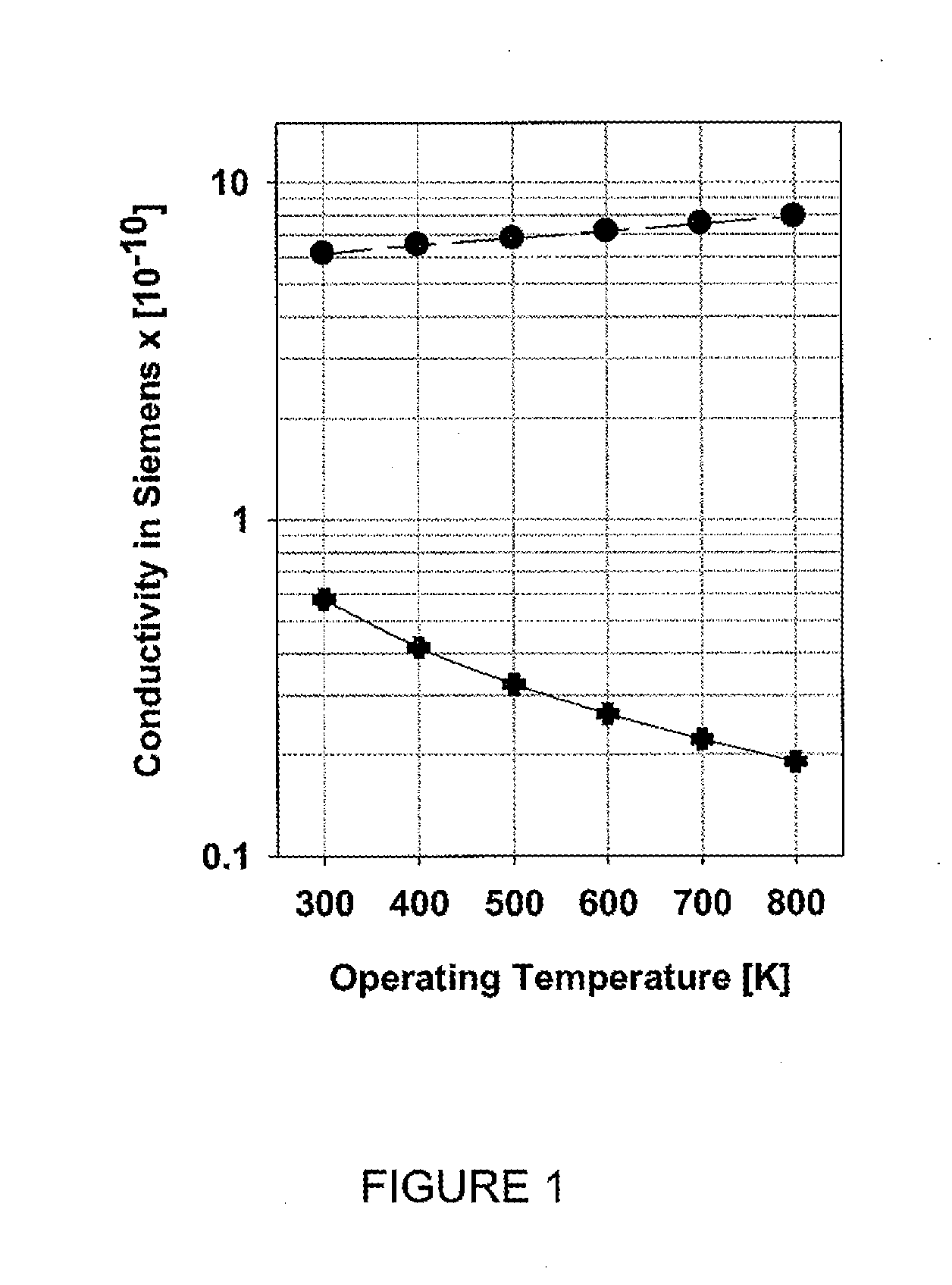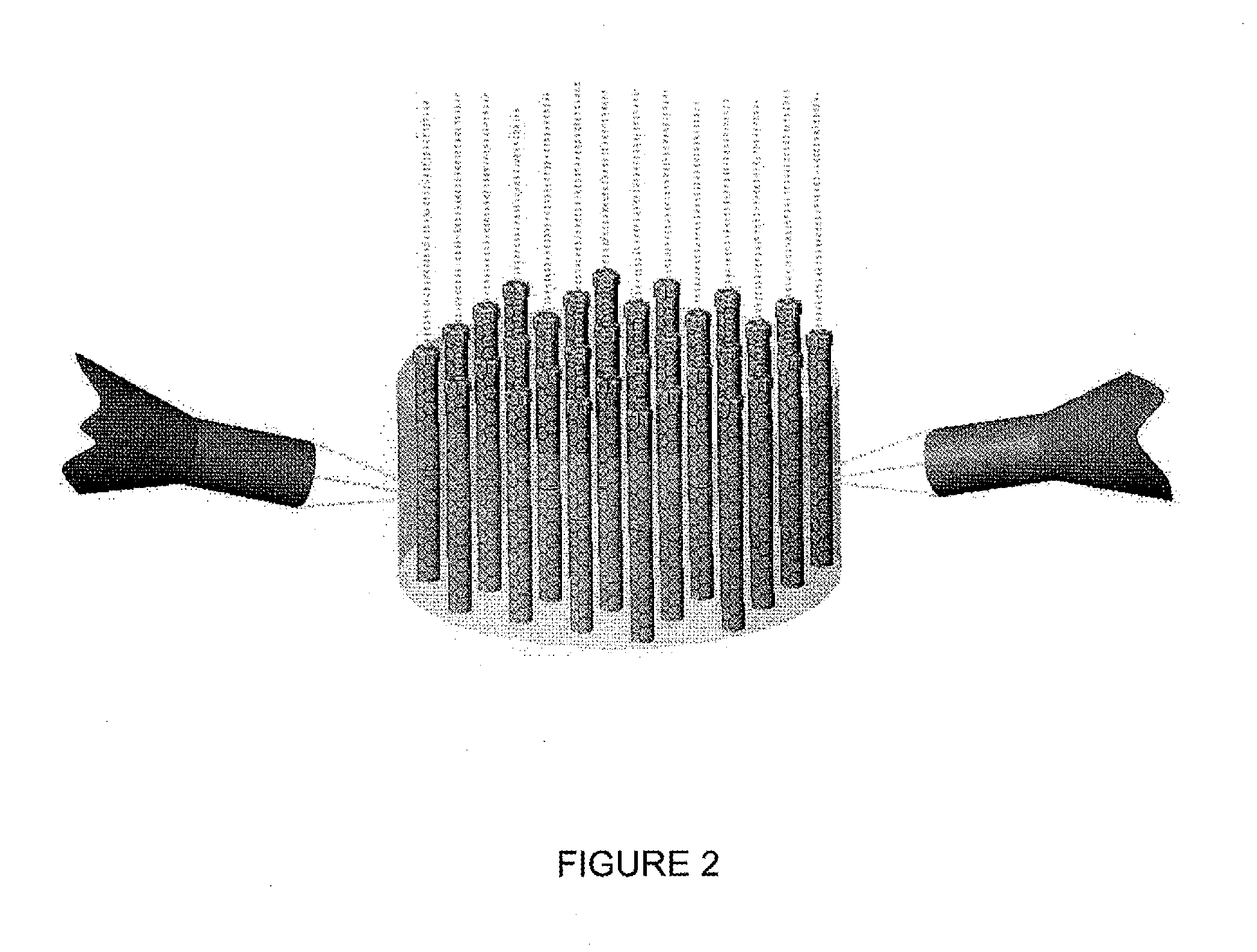Ultraconducting articles
a technology of ultraconducting and articles, applied in the direction of conductors, carbon-silicon compound conductors, coatings, etc., can solve the problems of weak and electrically robust, superconductive tapes with limited flexibility for such applications, easy damage, etc., to reduce the use of expensive or rare materials, the effect of enhancing conductivity and cost-effectiveness
- Summary
- Abstract
- Description
- Claims
- Application Information
AI Technical Summary
Benefits of technology
Problems solved by technology
Method used
Image
Examples
example 1
Results
[0036]In the copper matrix, gold-coated nanotube samples, electrical conductivity improvements of over 5% over bulk copper were measured. In the gallium matrix samples, electrical conductivity increases of up to 20% over bulk gallium, even without coating the nanotubes, was observed.
[0037]An additional approach mixes the coated nanotubes (not necessarily pre-aligned), into a liquid metal bath, concentrates the nanotubes using density differences, and drives the mix of nanotubes and liquid metal through a specialized die. As it passes through the die the mix is cooled and solidified into a wire. This has the particular advantage that the nanotubes can be aligned due to the nature of the fluid flow (e.g. through shear forces). After the matrix is formed for each bundle, multiple bundles can be braided or combined into larger cables.
PUM
| Property | Measurement | Unit |
|---|---|---|
| tensile strength | aaaaa | aaaaa |
| density | aaaaa | aaaaa |
| diameter | aaaaa | aaaaa |
Abstract
Description
Claims
Application Information
 Login to View More
Login to View More - R&D
- Intellectual Property
- Life Sciences
- Materials
- Tech Scout
- Unparalleled Data Quality
- Higher Quality Content
- 60% Fewer Hallucinations
Browse by: Latest US Patents, China's latest patents, Technical Efficacy Thesaurus, Application Domain, Technology Topic, Popular Technical Reports.
© 2025 PatSnap. All rights reserved.Legal|Privacy policy|Modern Slavery Act Transparency Statement|Sitemap|About US| Contact US: help@patsnap.com



